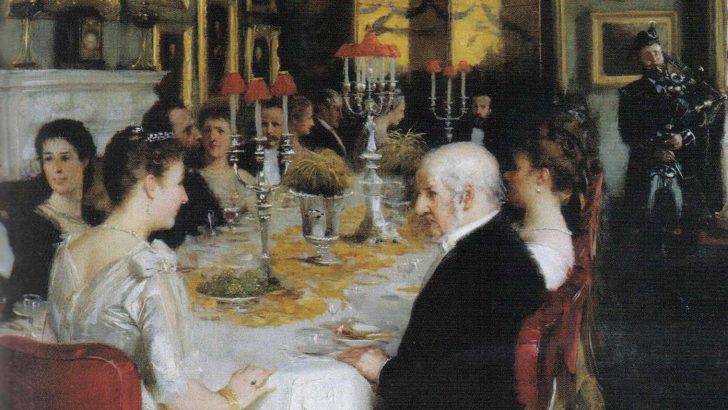Fortune’s Many Houses: A Victorian Visionary, a Noble Scottish Family, and a Lost inheritance
by Simon Welfare (Simon & Schuster, £25.00)
Here in Ireland for many people in the early 20th century (and some even now) the Earl and Countess of Aberdeen were figures of folklore among many nationalists, as both Lord Lieutenant Johnny Gordon and his wife Ishbel were seen as supporters of Home Rule, land reform and all the other good and great things promised by the Liberals but denied by the Conservatives. In North America, they were feted by Irish societies and political associations at elaborate dinners.
They returned later to the Phoenix Park and Dublin Castle for a second term which proved even more active and controversial – especially as it coincided with the notorious theft in 1907 of the so called ‘Irish Crown Jewels’ in which the Dublin rumour mill attempted to involve their son Lord Haddo (with others talking of unsavoury sexual scandals in the castle of which there was no evidence, merely the echo of cases in Germany and Austria).
But it was the Countess’ campaign to eliminate TB, that scourge of rural and urban Ireland at long last, and her other work for the poor of Ireland, that was the real point of memory in Ireland.
Yet their hectic Irish years were only a small part of their lives. For Irish people what else they did in the way of active good works elsewhere is cloudy. This book, by distinguished television producer Simon Welfare who married into the family, will fill out the details, putting Ireland in a much wider, and even more extraordinary imperial perspective.
Avoided
But here too Ireland was not to be avoided. Ishbel was the promoter and the paymistress of the Irish contribution to the Chicago World Fair in 1893, for which she had erected an ‘Irish village’ around a replica of Blarney Castle, with its famous stone, and typical Irish village street. Largely through the sale of Irish-made goods, this was a huge success, and even more astonishingly it actually returned to the Aberdeens a nice fat profit.
The influence of what she did can be detected across every effort at the national marketing of Ireland as a desirable destination ever since. She may be forgotten by many, but the influence of her ideas, her generosity and her good will to all lingers on.
However a dark shadow was creeping up on the family and its fortune. The story continues, but on a dying note as economies become commonplace, properties were sold off (when they could be); city houses went better than Highland estates, or other farms and holdings in Canada and the USA.
Outlived
Johnny died in 1934, Ishbel in 1939: they had outlived their era. There was, quite amazingly, nothing really left of that great family fortune to pass on to their heirs.
But they left behind them friendly memories and kindly thoughts. The popular Irish novelist of the day Katherine Tynan remarked: “Despite her preoccupation with many charities and her way of turning night into day, there was, there is something extraordinarily comfortable about Lady Aberdeen. She, too, is of the women who make home where ever they are.”
Such a family saga would be easy to over-fill to the confusion of both author and readers. But Mr Welfare has adroitly built the book around the Aberdeens’ connection with a long series of houses, houses that in the end undermined their wealth and brought the family to ruination. His book as a whole provides an epitome in miniature of the rise, glory and extinction of the British Empire, in which Ireland is given a significant role.
I enjoyed every word of this biography, as I imagine will readers in Britain, Canada, and the USA. I was left wondering if we might not soon see the whole saga converted to a rival show to Downton Abbey. But meanwhile don’t miss the book: it is a wonderful, run-along on wheels read, an always engaging account of the efforts of a gallant couple to change, if not actually save the world.


 Peter Costello
Peter Costello Ishbel Countess of Aberdeen entertains Gladstone - a close friend - at dinner.
Ishbel Countess of Aberdeen entertains Gladstone - a close friend - at dinner. 